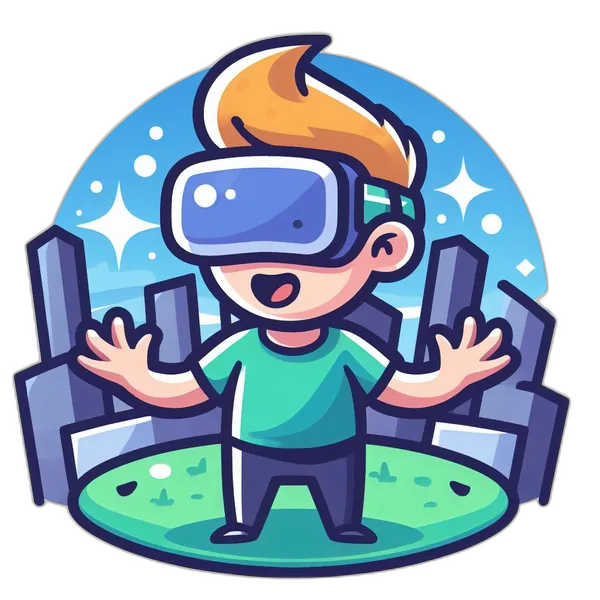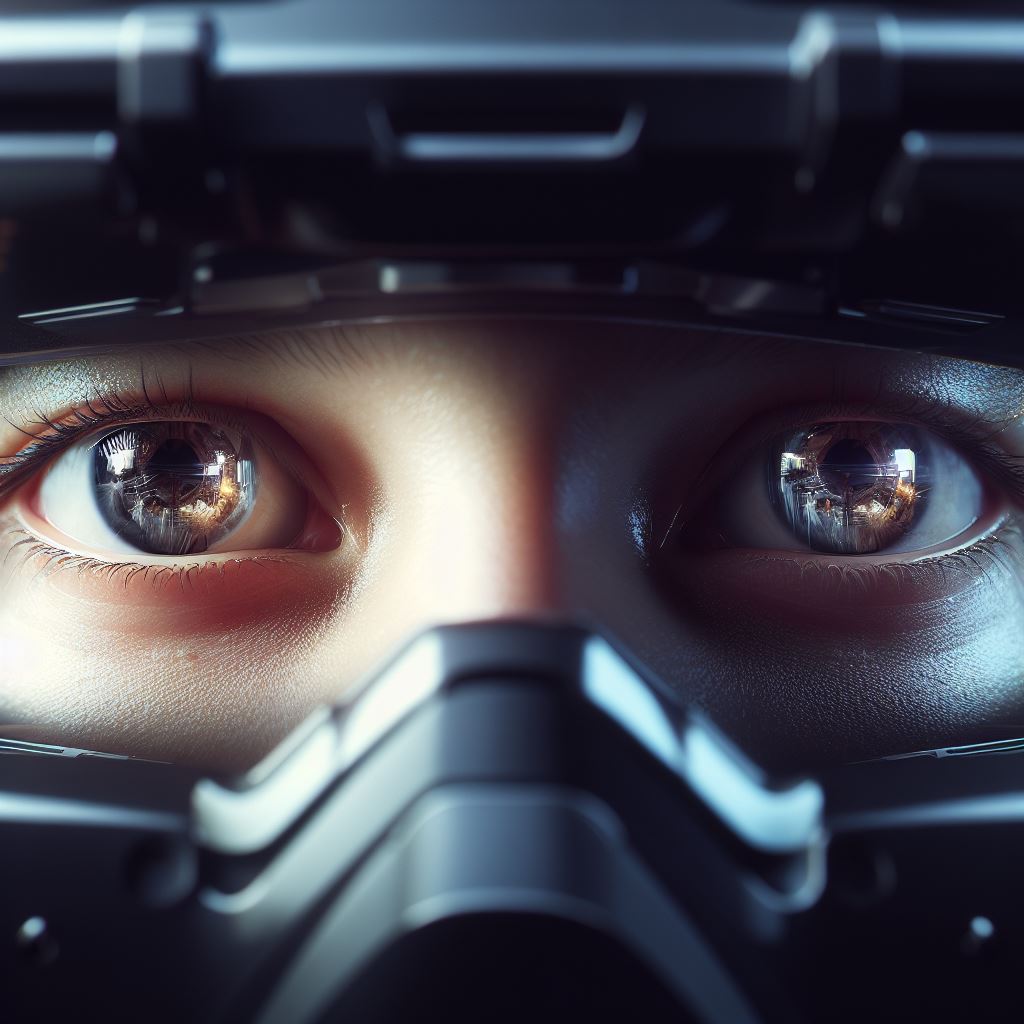Subscribe now for hand-picked best experiences, product discounts, and the latest VR trends, tips and tricks, straight to your inbox.
Virtual reality (VR) is a technology that allows users to experience immersive and interactive simulations of various environments. VR headsets are devices that display VR content and track the user’s head movements to create a realistic sense of presence. VR can be used for entertainment, education, training, therapy, and more.
However, some people may wonder if VR is safe for the eyes, especially if they use it for long periods of time or have existing vision problems. In this article, we will explore the effects of VR on the eyes, the potential risks and benefits, and some tips to prevent eye strain and discomfort.
Key Takeaways
- VR headsets can cause eye strain, eye fatigue, blurred vision, and motion sickness in some users.
- Eye strain is usually not a serious or long-term problem, but it indicates that the eyes need a break from VR.
- Motion sickness is caused by a mismatch between what the eyes see and what the body feels in VR. It can be reduced by adjusting the settings, choosing appropriate content, and taking breaks.
- VR headsets are not recommended for children under 12 or 13 years old, as their visual and perceptual systems are still developing.
- VR headsets may not work well for people with amblyopia (lazy eye), strabismus (crossed eyes), or other binocular vision disorders. They may not experience the 3D effects of VR or may have headaches or eye fatigue.
- VR headsets may also have some benefits for the eyes, such as improving visual acuity, depth perception, and eye-hand coordination. Some VR applications are designed for vision therapy and rehabilitation.
- To use VR safely and comfortably, it is important to follow the manufacturer’s guidelines, limit the session time, take regular breaks, blink often, adjust the headset properly, and consult an eye doctor if needed.
How Does VR Affect the Eyes?
VR headsets create a 3D virtual environment by showing each eye a slightly different image on a screen close to the eyes. The images are then focused and reshaped by lenses to create a stereoscopic effect. The headsets also track the user’s head movements and change the images accordingly to create a sense of motion and immersion.
However, this process can also cause some challenges for the eyes and the brain. Some of the factors that can affect the eyes in VR are:
- Accommodation-convergence conflict: This is when the eyes have to focus on a fixed distance (the screen) but converge at different distances (the virtual objects). This can cause eye strain, blurred vision, or double vision.
- Vergence-accommodation mismatch: This is when the eyes have to converge at a different distance than they have to focus. This can cause eye fatigue, headaches, or reduced depth perception.
- Low resolution: This is when the images on the screen are pixelated or blurry. This can reduce the quality of the VR experience and make it harder for the eyes to focus.
- Low refresh rate: This is when the images on the screen are not updated fast enough to match the head movements. This can cause flickering, lagging, or ghosting effects that can disrupt the immersion and cause motion sickness.
- Field of view: This is how much of the virtual environment is visible to the eyes. A narrow field of view can limit the immersion and cause tunnel vision. A wide field of view can increase the immersion but also increase the motion sickness.
- Brightness and contrast: This is how bright or dark the images on the screen are. Too much brightness can cause glare or eye irritation. Too little brightness can cause eye strain or difficulty seeing details.
- Blinking: This is how often the eyes moisten themselves by closing and opening. Blinking is essential for keeping the eyes healthy and comfortable. However, people tend to blink less when using VR headsets, which can cause dry eyes or irritation.
What Are the Risks of Using VR Headsets?
Using VR headsets can pose some risks for the eyes, especially if used excessively or improperly. Some of the possible risks are:
- Eye strain: This is when the eye muscles become tired or sore from focusing on a screen for too long. Eye strain can cause symptoms such as redness, burning, itching, watering, or pain in the eyes. Eye strain is usually not a serious problem and can be relieved by resting the eyes or using artificial tears.
- Eye fatigue: This is when the eyes become exhausted from processing visual information in VR. Eye fatigue can cause symptoms such as blurred vision, difficulty focusing, sensitivity to light, or headaches. Eye fatigue can also affect mood, concentration, and performance. Eye fatigue can be prevented by taking breaks from VR and doing some eye exercises.
- Blurred vision: This is when the eyes cannot see clearly or sharply in VR or after using VR. Blurred vision can be caused by eye strain, eye fatigue, low resolution, accommodation-convergence conflict, or vergence-accommodation mismatch. Blurred vision can affect the quality of the VR experience and the real-world vision. Blurred vision can be improved by adjusting the headset settings, wearing corrective lenses, or consulting an eye doctor.
- Motion sickness: This is when the eyes and the brain perceive motion in VR that does not match the motion of the body. Motion sickness can cause symptoms such as nausea, vomiting, dizziness, sweating, or fainting. Motion sickness can be caused by low refresh rate, field of view, brightness, contrast, or content. Motion sickness can be reduced by choosing appropriate VR content, adjusting the settings, or taking anti-nausea medication.

What Are the Benefits of Using VR Headsets?
Using VR headsets can also have some benefits for the eyes, especially if used for specific purposes or applications. Some of the possible benefits are:
- Improving visual acuity: This is the ability to see fine details and distinguish objects at different distances. VR headsets can improve visual acuity by providing high-resolution images, stimulating the eye muscles, and enhancing the contrast sensitivity. Some VR applications are designed to train the eyes to see better, such as [EyeSim VR], which is a VR simulator for eye doctors and patients.
- Improving depth perception: This is the ability to judge the distance and size of objects in 3D space. VR headsets can improve depth perception by creating realistic and immersive 3D environments, stimulating the binocular vision, and enhancing the motion parallax. Some VR applications are designed to improve depth perception, such as [VR Vision Therapy], which is a VR program for people with amblyopia or strabismus.
- Improving eye-hand coordination: This is the ability to coordinate the movements of the eyes and the hands to perform tasks that require precision and accuracy. VR headsets can improve eye-hand coordination by providing interactive and engaging VR experiences, stimulating the visuomotor system, and enhancing the feedback loop. Some VR applications are designed to improve eye-hand coordination, such as [VR Ping Pong], which is a VR game that simulates table tennis.
How to Use VR Headsets Safely and Comfortably?
To use VR headsets safely and comfortably, it is important to follow some guidelines and tips, such as:
- Follow the manufacturer’s instructions: Each VR headset has its own specifications, features, and settings. It is important to read the user manual, follow the safety warnings, and adjust the headset properly before using it. Some of the settings that can be adjusted are the interpupillary distance (IPD), which is the distance between the pupils; the lens distance, which is the distance between the eyes and the screen; and the brightness, contrast, and volume levels.
- Limit the session time: Using VR headsets for too long can cause eye strain, eye fatigue, blurred vision, or motion sickness. It is recommended to limit the session time to 15 to 30 minutes per day for adults and 10 to 15 minutes per day for children. It is also advisable to take breaks every 10 to 15 minutes or whenever feeling uncomfortable or dizzy.
- Blink often: Blinking is essential for keeping the eyes moist and healthy. However, people tend to blink less when using VR headsets, which can cause dry eyes or irritation. It is important to blink often and consciously when using VR headsets. It may also help to use artificial tears or eye drops before or after using VR headsets.
- Wear corrective lenses: If wearing glasses or contact lenses, it is important to wear them when using VR headsets. Some VR headsets are compatible with glasses or have prescription lenses available. Wearing corrective lenses can improve the clarity and quality of the VR experience and prevent eye strain or blurred vision.
- Consult an eye doctor: If having any existing vision problems or experiencing any symptoms of eye discomfort or damage after using VR headsets, it is important to consult an eye doctor. An eye doctor can diagnose any eye conditions, prescribe any treatments, and advise on how to use VR headsets safely and comfortably.
Conclusion
VR headsets are devices that create immersive and interactive simulations of various environments. They can have both positive and negative effects on the eyes, depending on how they are used and for what purposes. To use VR headsets safely and comfortably, it is important to follow some guidelines and tips, such as following the manufacturer’s instructions, limiting the session time, blinking often, wearing corrective lenses, and consulting an eye doctor if needed.
VR headsets can be a fun and useful technology for entertainment, education, training, therapy, and more. However, they should not replace or interfere with real-world vision or activities. It is important to balance the use of VR headsets with other forms of visual stimulation and exercise.
Subscribe now for hand-picked best experiences, product discounts, and the latest VR trends, tips and tricks, straight to your inbox.



Leave a Reply